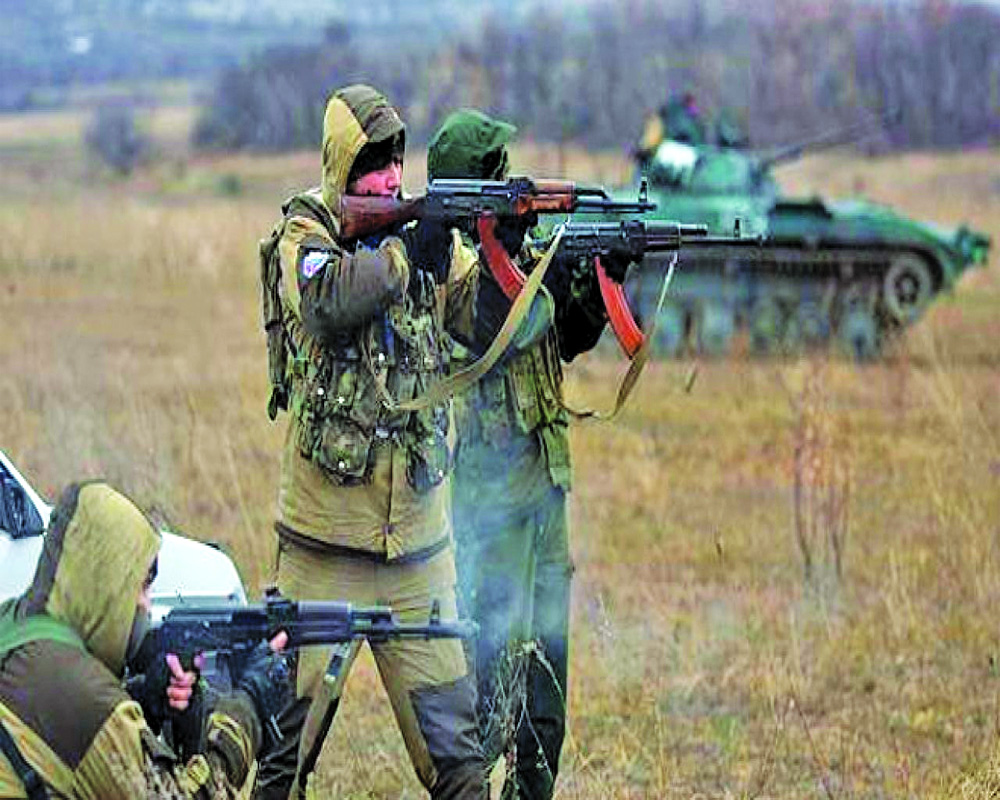Fallout of war is a push by US allies to restart their weapon acquisition
This week marks one year of war in the heart of Europe, which has led to a massive shift in the geopolitical tectonic plates, spread across several continents. The war has led to a sudden rethink of diplomatic priorities for many countries in the west, including recalibration of security goals.
The first fallout of the Russian war in Ukraine has been a renewed push by some of the US’ closest allies to restart their weapon acquisition and manufacturing programme. Germany, which post-World War had shunned weapons and accepted the US security shield under the North Atlantic Treaty Organisation (NATO) umbrella, has vowed to increase its defence expenditure by many folds from its current outlay.
In the east, Japan, another US ally, has also stepped up its domestic defence systems acquisition programme to keep pace with the changing geo-strategic landscape.
India and the US, meanwhile, have just energised the Initiative on Critical and Emerging Technology (iCET), which is a significant beginning for the two countries. These two democracies (the largest in the world) had for decades viewed their bilateral relationship through the previous era prisms of the Cold War. India had a huge dependence on Russia for its defence equipment. India’s own reluctance to engage openly with the US, while dabbling with old school trade unionism through bodies like Non-Aligned Movement, has played out in the old India-US bilateral relationship.
In a recalibrated world order, hit by two back-to-back setbacks, India and the US have found a common ground to move beyond their strategic defence ties to an era of collaboration on frontiers, where no Indian or American has gone before. These nations realise the next, strategic advantage for any aspiring or exiting global power can only be pivoted on development and deployment of emerging and critical technologies such as artificial intelligence, quantum computing and spacecraft.
The iCET promises to work as a technology corridor between skilled personnel of both nations to jointly develop technologies for the future. The subtheme here, which is hard to miss, is China which has already taken a huge leap in the existing technology category. One example regarding China’s advantage, which is often bandied around, is the huge influence of Chinese equipment in the 5G telecom ecosystem.
Similarly, China with its ambitious and often reckless space programme has already started claiming important real estate, beyond earth’s atmosphere levels, even as it pushes several satellites capable of offensive strikes or serve as tactical advantage in an event of military escalation.
However, it is this changed geopolitics which may make it difficult to arrive at a meaningful consensus framework with G20 members. India is pushing hard to find common understanding and possible financing around digital public infrastructure, (a bunch of citizen centric applications built on a technology platform financed by the public and private sector). China would like to have its greater say in any technology-based standard, while the western nations may have their own set of compulsions.
Meanwhile, China is finding it increasingly difficult to have a smooth economic partnership with the US and Europe, whose large enterprises (particularly in the technology domain) made China, the factory of the world, and pulled up several millions of its citizens out of poverty in just a couple of decades. China’s “limitless friendship” with Russia is proving to be a major hindrance towards reinstituting fractured ties with western allies. Russia on its part is perhaps looking for an honourable exit from Ukraine, triggered by economic isolation, a fallout which may have an impact for many decades to come.
(The author is a foreign affairs commentator)


























